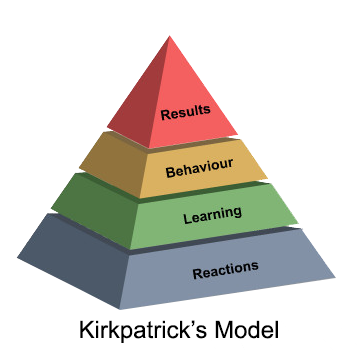
ROI of online training is a hot topic right now. What is really important to note is that measures to maximize ROI must not be handled in isolation. Instead, they need to be an integral part of the cycle that begins with your Training Needs Analysis (TNA), determining the training format (online, blended, or ILT), learning strategy, and evaluation.
How To Maximize The Online Training ROI
In this article, I will outline tips and best practices that you can use to maximize the ROI of online training.
Let me begin with two extracts from my earlier article, How To Measure The ROI Of Online Training to set the baseline:
Definition of ROI: ROI is the return on investment that an organization makes (ROI = Gain or Return/Cost). It can be determined through two factors namely the Investment made (or cost incurred) and Value/Gain accrued (or return). A successful eLearning initiative should be able to demonstrate gains that are more than the investment.
ROI Methodology: I had also highlighted the commonly used ROI methodology that you can use. This is Kirkpatrick’s model of evaluation.
In this article, I will outline 6 tips that you can use to maximize ROI of online training. You will note that each of these tips will influence different levels of Kirkpatrick’s model of evaluation.
These measures are easy to implement and will also enable you to assess the impact of each measure from Level 1 to Level 4.
- Aligning the learning outcomes to business and performance goals.
To begin with, it is a good idea to take time to do a detailed Training Needs Analysis and Competency Mapping exercise, which will help scope the learning gaps and possible options clearly.- From a business perspective, you need to choose eLearning projects that are significant and the identified proficiency gains must have a clear impact on the business.
- From learners’ perspective, you must identify the indicators (reflecting the gain in learners’ proficiency) that you can use to assess if right learning and its application on the job happened.
- Adopting the right learning strategy to craft the online trainings.
Once you have selected the project that has high-leverage, the focus moves to adopting the right learning strategy and creating courses that are effective. This needs a strong Learning Design core that Instructional Design brings in. Specifically:- The learning experience must be engaging and immersive with the focus of the course being a combination of Learn, Explore, and Test.
- The focus should be on learning experiences that offer real life situations, examples, and scenarios that learners can relate to (rather than only theoretical aspects).
- The learning design should enable the learners to understand, analyze, and apply this learning meaningfully on the job. You can use approaches that provide “sticky learning” that could include:
- Gamification.
- Scenarios (including decision making, branching).
- Stories.
- Videos and interactive videos.
- Adopting an effective assessment strategy.
An effective assessment strategy helps us evaluate if the training met the required cognition level and was indeed able to bridge the identified gap. To make your assessment strategy effective, you can:- Opt for approaches like gamified activities, gamified assessments, and leader-boards.
- Use “not so predictable” question formats. (For instance, change “True/False question” to “Isolate Facts from Myths”. This will retain the learners’ interest as well as result in higher retention.)
- Offer tests and quizzes as stand-alone assets on mobile devices that can be used by the learners to check-point their knowledge as well as practice.
- Pushing the envelope to knowledge application.
A great way to achieve this is by using Performance Support Tools (PSTs) that can complement or supplement the eLearning program.- These just-in-time learning aids can be provided to the learners at their workplace and within their workflow.
- They can be made available to the learners within their work-flow thereby increasing the probability of their usage “in time of need”.
- They could contain Checklists, Ready-Reckoners, Read-This-First or Simple tips, Best Practices, and so on.
- Providing a platform for collaboration in learning (social learning).
Research shows that nearly 20% of our learning happens from feedback and from observing our co-workers (peers, seniors, or role models). It is interesting to note that only 10% of learning happens through formal training. Providing platforms for social or informal learning will facilitate learning and can also be used to create live case studies of success. To gain insight on how you can leverage on Social learning, you can refer to my article What is social learning and how can you use it to foster collaborative learning. - Obtaining user feedback and using it to update your approach.
During the online development, you must collect feedback from target learner groups. This should be implemented as you move along. This feedback could include:- Initial reaction: Interesting, Boring, Predictable, and Not Engaging.
- Learnability: This could include aspects like adequacy of content to meet the learning outcome, impact of the learning strategy, efficacy of learning strategy (in learning, retention, and application), and so on.
I hope this article provides easy to apply measures that can provide a step up in your organization to create a high impact learning strategy and positive ROI on online training initiatives.
We, at EI have a focus group that will work with you in determining your custom methodology to measure ROI. Additionally, we will work with you to identify and implement the success factors that will enable you to maximize the ROI of online training.
Read More:




